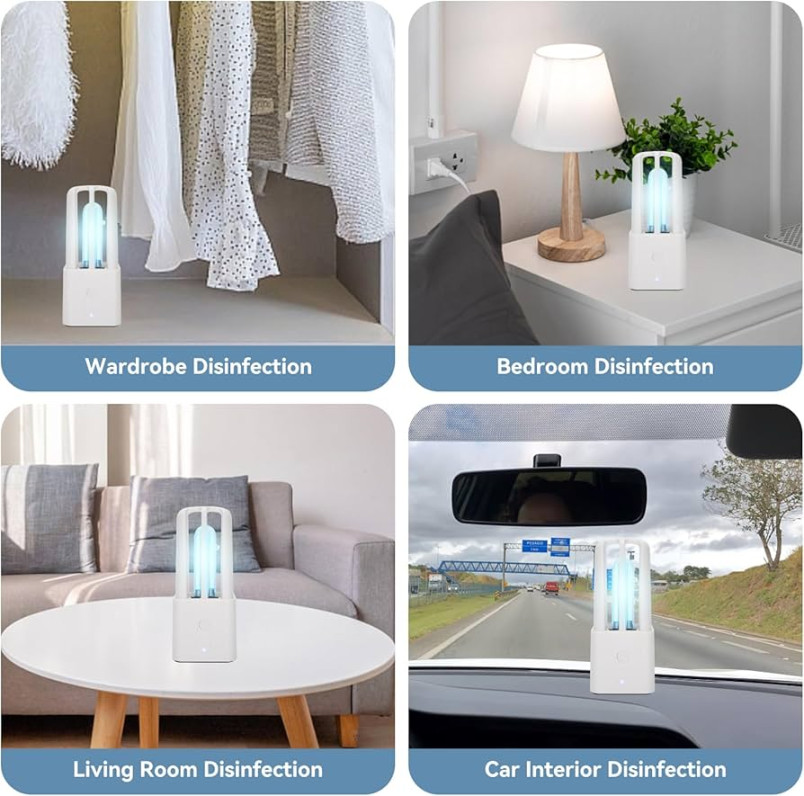The Power of UV Light: Beyond Sunburns
Have you ever wondered about the mysterious force that turns our skin golden after a day at the beach? It’s not just the sun’s warmth or the ocean’s breeze; it’s a type of electromagnetic radiation called ultraviolet (UV) light. While UV light is often associated with sunburns and skin cancer, it’s a multifaceted force with a surprising range of applications.
The UV Spectrum: A Rainbow of Energy

UV light is part of the electromagnetic spectrum, which includes visible light, radio waves, X-rays, and more. It’s divided into three main categories: UVA, UVB, and UVC. Each type has its own unique properties and effects on our bodies and the environment.
UVA: This type of UV light has the longest wavelength and penetrates deepest into the skin. It’s responsible for tanning and aging, but it’s also used in tanning beds and some medical treatments.
Beyond Sunburns: The Benefits of UV Light
While UV light is often associated with negative consequences, it also has many beneficial applications. Here are a few examples:
Vitamin D Production: UVB rays are essential for the body to produce vitamin D, a nutrient that plays a crucial role in bone health, immune function, and mood regulation. Exposure to sunlight for a short period each day can help maintain adequate vitamin D levels.
Harnessing the Power of UV Light
As we continue to explore the properties of UV light, we’re discovering new and innovative ways to harness its power. From medical treatments to water purification, UV light is playing an increasingly important role in our lives. While it’s essential to protect our skin from excessive exposure to UV rays, we can also appreciate the many benefits that this versatile form of electromagnetic radiation offers.
The Science Behind Vitamin D Synthesis
Vitamin D, often referred to as the “sunshine vitamin,” is a crucial nutrient for our bodies. It plays a vital role in maintaining bone health, immune function, and even mood. But did you know that the primary way our bodies produce vitamin D is through exposure to ultraviolet (UV) light from the sun?
The Vitamin D Synthesis Process
When our skin is exposed to UV light, specifically UVB rays, a chemical reaction occurs. Cholesterol in our skin cells is converted into a precursor form of vitamin D. This precursor then travels to our liver and kidneys, where it undergoes further transformations to become the active form of vitamin D.
The Importance of UV Exposure
While excessive UV exposure can lead to sunburn and skin damage, moderate amounts are essential for vitamin D synthesis. Adequate vitamin D levels are associated with various health benefits:
Stronger bones: Vitamin D helps regulate calcium and phosphorus absorption, which are crucial for bone health.
Factors Affecting Vitamin D Synthesis
Several factors can influence how much vitamin D our bodies produce through UV exposure:
Skin color: People with darker skin pigmentation produce less vitamin D than those with lighter skin, as their skin contains more melanin, which protects against UV rays.
Getting Enough Vitamin D
While sun exposure is the primary way to obtain vitamin D, it’s not always practical or safe to rely solely on the sun. Here are some other ways to ensure adequate vitamin D intake:
Dietary sources: Foods like fatty fish (salmon, mackerel, tuna), egg yolks, fortified milk, and fortified cereals are good sources of vitamin D.
In conclusion, UV light plays a crucial role in our bodies’ ability to produce vitamin D, a nutrient essential for various health benefits. While it’s important to protect our skin from excessive UV exposure, moderate amounts are necessary for optimal vitamin D synthesis. By understanding the factors that influence vitamin D production and exploring different sources, we can ensure that we are getting enough of this vital nutrient.
 Udento Lifestyle & Health
Udento Lifestyle & Health




